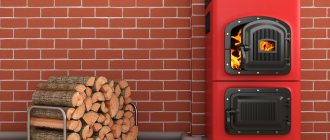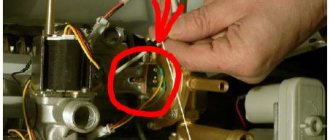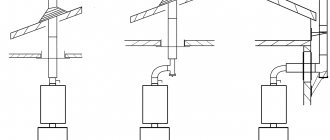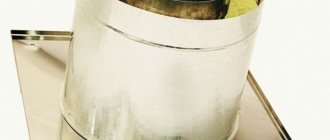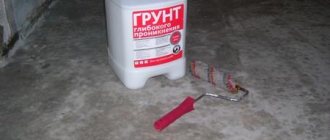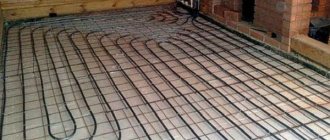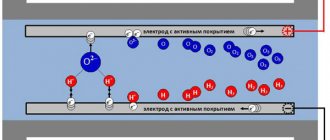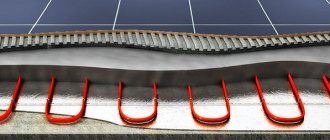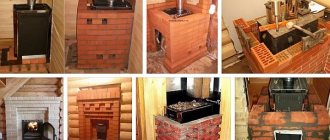How to heat water in a bath
There are several ways to heat water in a bathhouse, each of which has its own advantages and disadvantages. Most often, the choice of heater depends on specific conditions, the need for a particular amount of hot water, the volume of the bath room and financial costs.
Hot water can be obtained as follows:
- heat from a brick or metal stove;
- heat with an electric heater;
- heat with a gas heater;
- use a wood heater.
All of the above methods for heating water are very effective, but for their implementation a necessary condition is the mandatory centralized supply of running water and the presence of a water supply system.
Electric water heater for a bath
Electric heaters are either storage or flow-through. The use of both types of devices in a bathhouse is acceptable and justified. However, user reviews about them are directly opposite - some believe that it is easier to heat water with a flow-through heater, while others prefer storage heaters for this purpose.
Storage boilers have quite impressive sizes, especially when it comes to devices with a volume of 100 liters or more. Therefore, for small baths, this is not the most reasonable method of heating water. There is another important problem with a storage water heater. In winter, when the bathhouse is heated only periodically, the water in the boiler and the entire system may freeze.
This problem can be solved in three ways:
- Heat water in a bathhouse using a storage boiler model with constant maintenance of a minimum temperature. However, there are also disadvantages here - unwanted excess consumption of electricity and the risk of sudden shutdown.
- Drain hot water from the storage tank and the entire system after each use. The measure is quite labor-intensive, but in winter, in order to avoid freezing of the water system, it is completely justified.
- Use storage heaters only in heated rooms or solve the heating problem by all possible means.
Warning!
All electrical appliances must be connected to the network through an RCD emergency shutdown device. In addition, the room must be grounded. It is unsafe to use electrical appliances in high humidity environments. Flow-through heaters heat water quickly and are compact in size. Powerful models supply hot water at high temperatures and such devices are good for areas with developed, stable power transmission. In summer cottages, network power is usually limited to 5 kW, so it is necessary to use low- and medium-power electrical appliances.
For the productive operation of instantaneous water heaters, water pressure (pressure) is of considerable importance. All models of flow-through heaters are designed for a certain amount of Pa (this is specified in the passport for the electrical device).
There are small difficulties in using flow-through devices that need to be taken into account when installing the equipment. In winter, the liquid supplied to the boiler is very cold and often it simply does not have time to heat the water to the optimal temperature. This problem can be resolved by installing shut-off valves before and after the water enters and exits the heater. With the help of such regulation, sufficient pressure is created in the heater, and the automation of the device helps resolve the issue with the heating temperature of hot water.
Gas water heater
The easiest way to heat water in a bathhouse is to use a gas heater, in other words, an ordinary flow-through column. With it there will be no shortage of hot water, it has a summer-winter operating mode and is very economical.
However, gas heaters also have their “buts”. Supplying a gas line to a bathhouse is a very troublesome and expensive task. For owners of garden plots and dachas, the possibility of installing gas communications is reduced to zero. For cottage villages and areas with an existing gas pipeline, this is possible, but too expensive.
Wood-burning water heaters
A wood-burning water heater (titanium) may be the only way to heat water for a bathhouse where there is no electricity. In essence, this is the same boiling pot as in a long-distance train carriage. The design of the heater is simple: at the bottom of the device there is a firebox, and at the top there is a container for hot water.
Titan has a steel firebox with a cast iron grate. The shape of the water heater is a tall cylinder, but there are models of an elongated rectangle. On top of the wood-burning titanium there is a chimney pipe, through which smoke and combustion products from the firebox escape to the outside.
Such heaters are heated with wood waste, wood chips, trimmings, shavings, and sawdust. It is not recommended to heat wood-burning water heaters with coal, since its burning time is completely different. The volume of liquid heated in titanium is from 80 to 90 liters.
Modern wood-burning titans have cold water inlet valves, faucets, and hot water outlets through the shower. When using such heaters in winter, if the bathhouse is not heated in any way, the water container must be drained after each use. And in the summer, with an average daily temperature above zero, the tank should always be filled.
Important! Modern industrial water heaters are equipped with special mixers, so replacing them with conventional taps, thermostatic and cascade shower sets is impractical and unsafe.
Other methods of heating water
Important! The use of gas boilers requires strict adherence to safety regulations. Installation and operation of equipment with a power of more than 50 kW requires the mandatory receipt of additional technical conditions and permits.
Electric water heaters are available in two types:
- Flow type with optimal performance of 2.5 l/s. The equipment heats the water as it moves, consuming the greatest amount of electricity.
- Capacitive water heaters with an optimal volume of 100 l. They consume significantly less electricity. The water is heated for 3-4 hours, after which its temperature is maintained constant.
In order to save energy and ensure the ability to use the shower in the washing room at any time, a combined system is used. It consists of a furnace and an electric water heater, which can work simultaneously to quickly heat a large volume of water or separately, depending on the current need.
How to heat water in a bathhouse from a stove
You can organize heating of water in a bathhouse with a brick stove using a cast-iron stove above it. The hot water tank is installed directly on the stove itself, it can be round or square, with water supplied to fill the tank from the incoming water pipe and hot water drawn through the tap.
You can heat water without connecting water pipes to it. In this case, for each heating of the steam room, reserves of cold water should be made in the dressing room, and the water tank should be filled manually before lighting the stove.
This method of heating water is quite simple, but it has significant disadvantages:
- labor intensity of preparation;
- increased humidity from boiling during prolonged heating;
- risk of getting burned on the heated walls of the oven and tank.
You can heat water from the stove in different ways. This depends on the type of stove itself, the presence of water pipes connected to the bathhouse, the financial capabilities of the owner and his desire to make certain efforts.
Heating water in a bathhouse through a heat exchanger
The best option for heating water in a bathhouse is the heating method using a heat exchanger. There are several ways to make a structure for heating through a heat exchanger.
In a brick oven, the heat exchanger can be a multi-section cast iron battery or a register welded from a thick-walled steel pipe. The heat exchanger is mounted in a special furnace cavity with separate inlet and outlet valves. When the stove heats up, the water in the exchanger becomes hot and is dispensed through the water tap as needed.
In the case of a metal stove, everything is much simpler. In order to heat water with such a furnace, several types of heat exchangers are used:
- external heat exchanger (located in close proximity to the firebox or above it);
- internal heat exchanger (located in the firebox itself);
- heat exchanger on the flue pipe (located on the chimney pipe above the tank with stones).
Advice! The water tank with heat exchanger and the hanging tank can be used simultaneously. This combination makes it possible to heat an almost unlimited amount of hot water.
Water heater for a bath on a pipe
To heat the water in the bathhouse, tanks located on the pipe are used. They can have a rectangular, square or cylindrical shape and are rigidly mounted on the stove chimney pipe. Pipe water heaters are universal; they are used in wood stoves and gas boilers. The water tanks on the pipe are small (optimally up to 80 liters) and can fit even into a small bathhouse.
The tanks on the chimney pipe are located high enough above the stove, so there is no need to pump up hot water - it simply flows by gravity. The water tank can occupy the entire length of the pipe, from the heater itself to the ceiling. This increases the hot water production area and the efficiency of the heat exchanger.
The design of the water tank on the pipe must have reinforced fastening to the stove and the exhaust chimney on the ceiling, since a tank filled with hot water is heavy. The usual soft fastening of the chimney in the ceiling area is not suitable here, so for fastening it is best to use special chimney brackets.
Built-in or attached water tank to the stove
Another option for heating water is a water tank built into the stove structure or located on the side of it.
A built-in tank is a rather complex structure that must be thought out before laying a brick oven. The optimal solution here could be a special niche or recess in the furnace to accommodate a water tank with inlet and outlet valves and hot water intakes. It should be noted that for such a design the tank must be durable (preferably made of stainless steel), with thick walls and double welded seams. Otherwise, if a leak is detected, the entire structure of the furnace will need to be disassembled.
A water tank attached to the side of the stove is a less energy-intensive way to heat water. It is often used in bathhouses with metal stoves, which are supplied with water tanks. Since the steel or cast iron body of the furnace has good thermal conductivity, the water in the tank heats up quickly, and if necessary, the tank can be easily refilled (centrally or manually).
Hot water in the bathhouse from the stove (the layout of the water tank is shown below) is a simple task for a good owner.
Boiler in a bathhouse in winter
The boiler in the bathhouse in winter is exposed to low temperatures, which can damage it. We list the basic rules for handling a boiler (electric) in winter, which will help maintain its performance:
- It is recommended to purchase models equipped with an additional option for heating the tank: the water inside will not freeze, it will not have to be drained after the procedure;
- The large volume of the device requires early activation, so you should calculate whether it is really necessary. A boiler in a bathhouse in winter uses less hot water than a similar one at home;
- It is recommended to purchase a device with a lower power to comply with the electricity use limit (for example, in a summer cottage);
- The system for draining liquid from the water heater should be convenient, going directly into the sewer;
- The design of the connection of the system with the boiler must be made so that the safety valve does not freeze with the remaining unfused liquid;
- Install water supply pipes on the wall surface. Inside, hidden by panels and thermal insulation, the pipes will become covered with condensation, which will cause the appearance of mold and mildew;
- It should be remembered that constant draining of liquid from the water heater leads to accelerated wear of the device. The magnesium anode protects the inner surface of the tank, the heating element only while in the water. An empty container with liquid residue on the walls is not protected, over time it corrodes and fails.
Do-it-yourself hot water in a bathhouse: diagrams
Heating water in a bathhouse is not much of a hassle. However, in order for everything to function well and there is enough hot water, you need to adhere to the correct organization of the heating and water supply system.
The diagram of the water supply to the bathhouse through a heat exchanger with cold and hot water tanks on the roof of the bathhouse is placed below.
The scheme for heating water in a bathhouse is a water tank on a pipe plus a remote tank, as well as a “samovar” type water tank.
Diagram of a homemade wood-burning water heater.
Scheme of organizing hot and cold water in a bathhouse with a metal boiler and heat exchanger.
Diagram of a hot water supply system in a bathhouse with a “register” heat exchanger and a remote tank.
Bath boiler with tank
It is also a fairly simple, yet reliable option for heating water. Structurally, it is made of two parts:
- The lower one is intended for burning wood and other solid fuels (but not coal);
- The upper part is the reservoir. which heats the contents due to the heat of the chimney pipe passing inside the container.
It can be connected to a cold water supply system or equipped with a separate tank installed on the roof of the bathhouse. Under the influence of physical forces, hot liquid is displaced by heavy cold liquid during the washing process. The water heating tank must always be filled during use.
A wood-burning boiler for a bath with a container is equipped with a shower head and a special tap, which the manufacturer prohibits from replacing with ordinary faucets.
Advantages of a wood boiler: compactness, efficiency, ease of use, requires a small amount of solid fuel.
Heat exchangers
Devices operating on the principle of heat exchange have a classic design, according to which a small volume heating tank (no more than 5 liters) is installed in the hottest place of the furnace.
The cooled medium flowing through it is heated to a high temperature and then flows through a system of twisted pipes into a tank with working water. Its capacity significantly exceeds that of the internal tank (it can reach 120 liters).
Important! In order to eliminate the possibility of steam shock due to the rapid boiling of water in the heating tank, it is poured into a system of two containers even before the sauna stove starts igniting.
Taking this into account, the carrier in the first container is heated gradually and, due to the temperature difference, flows by gravity into areas with reduced pressure. Flowing through the primary circuit, the pipes of which are in contact with the external (heated) aqueous medium, it gives off its energy to it and enters the output of the system in an already cooled form.
Next, the entire heat exchange process is repeated, ensuring continuous circulation of the hot medium and heating of water in the user (working) tank. In order to avoid troubles associated with the formation of air pockets, as well as to maintain the required heating mode, an electric pump is often built into such heat exchangers.
